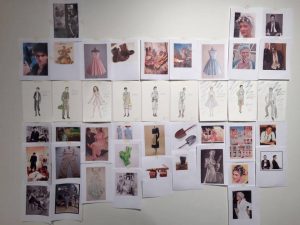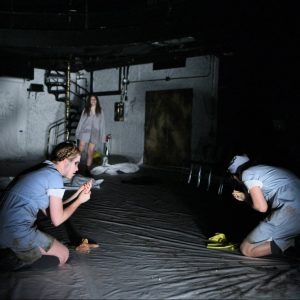In between classes, extracurriculars, and my Spanish and Portuguese thesis, I’ve spent the last year developing a new musical that runs Thursday May 11 through Sunday May 14 — Beautiful Girls: A Musical Playdate. Developed with two other theater certificate students, the play uses music by Stephen Sondheim to explore themes of friendship, queerness, and identity, and how all of these can and cannot be distilled in the clothes we wear. Looking back on this yearlong project, I realize it has helped me reconnect with what makes both research and creative work so fulfilling: the freedom to explore, improvise, and think beyond what has already been made.

When we started the project, we knew just a couple things about the show: 1) There would be only three actors: the three thesis students. 2) We would use songs by the versatile composer Stephen Sondheim. 3) We would queer this material by performing songs from a number of Sondheim’s shows, regardless of each character’s gender, personality, or “type.”
At our first production meeting, Vince, the music director, suggested it could be wildly fun to put our own mark on each song: adding voice parts to solos, layering different songs on top of each other, or even changing musical styles. This would require weekly sessions for musical improvisation. Rather than calling these “music rehearsals,” which implied some sort of set music to learn, we decided to call them “musical playdates.”
Continue reading When Work is Playtime: Reflections on the Creative Process





